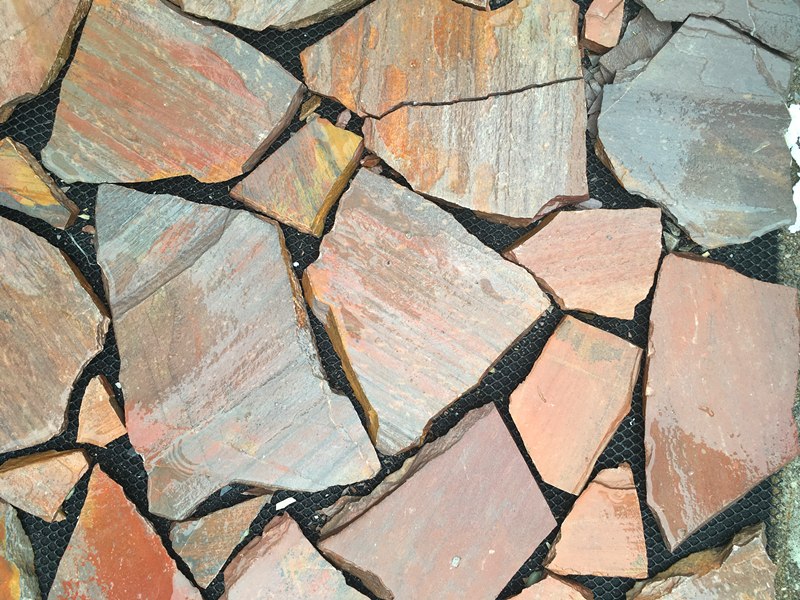

Slate Rock is a pretty versatile material to use as a hardscape. If you are not sure if rather or not the Slate you have is authentic, pour a small amount of vinegar on the rock, and if it bubbles… Don’t use it! True Slate is inert and will show no signs of alkalinity. If for any reason you experience a shift in PH after placing this stone in an aquarium, it either has been exposed to influential minerals or needs to be cleaned… Or it is not true Slate Rock.

This makes Slate ideal for any type of vivarium. Environmental Influenceĭue to its sedimentary composed material, Slate virtually has no impact on the environment it is placed within. Once discovered, either through tunneling into the ground or brought forth from a natural earthquake, only then is Slate revealed in its natural habitat. The original material is at one point, a fine clay, sometimes mixed with volcanic dust or sand… Over a period of time, the weight of the earth’s outer crust packs the minerals down causing it to take on its hard foliated look. This means it can only be mined and dug up. Slate Stone is a rock typically found under the earth’s crust all over the world. A rock this heavy could prove difficult to move, ship, or house in a stable way.

This is something to keep in mind if you are considering its use in tanks with inhabitants. When compared to other types of vivarium rocks, Slate is on the heavier side of the spectrum. The last property to note about Slate Stone is the weight. Even though Slate Rock of all colors is usually safe for vivarium use, it is good practice to do an alkaline test on the rock if it’s going in an enclosure that needs to stay in a particular PH range. Typical colors will range from brown, green, grey, blue, to even purple.

The colors of Slate will vary based on the compressed minerals contained in the parent stone it is harvested from. The edges of slate can be rather sharp and since this is generally considered a harder rock to work with, use caution with open edges in enclosures with inhabitants. Due to the circumstances that form this type of metamorphic stone, it doesn’t have much of a porous texture like many over hardscaping rocks. The recognizable foliage is also referred to as slaty cleavage. Being a low-grade, fine-grained rock, Slate is a smooth textured stone that exhibits foliation throughout its surface. Slate Rock is widely recognized for its plate-like properties. If you have Angel Fish and they start to pair up, try placing a piece of Slate vertically within the tank to influence breeding. Angel Fish will use this rock to place their eggs on. Another great use with Slate Rock observed by enthusiasts is its valuable use for breeding. This proved to not only be a great source of material to use in bioactive enclosures… But also allowed early hobbyists to safely heat the tank during colder seasons. In the primitive days of aquascaping, Slate was used as a base to support aquariums built during the Roman Empire era. Slate Stone has a relatively long history with use in vivariums. Due to the low-temperature pressure, this clay-based mineral is put through, it is one of the finest grained metamorphic stones found today. The foliated thinning slate exhibits are caused by the rock evenly splitting along the veins. This rock is most notably known for its slender look when harvested. Slate Rock is a metamorphic rock composed of various types of compressed sedimentary stones. T: 0435234261 Sample Photosīelow are some images of samples from our slate products range we sold in past.Elemental Type: Metamorphic Rock ( Shale, Mudstone, or Basalt) What Is Slate Rock? Please contact our showroom for exact prices. 0435234261 and we will try to match from our archives. Just send us photo of your existing floor to tel. We have service to match slate used in your floor. It is composed mainly by quartz, white mica, chlorite, feldspat, carbonate and iron oxide. Its physical properties, such as preferential cleavage, average hardness, low porosity, high mechanical resistance and resistance of its composing minerals to bad weather allow for its utilisation as revetment in various areas of building construction and architecture. Slate is a sedimentary derivation rock with fine granulation, weakly metamorphised, characterised by perfect cleavage, thus being able to form big sheets of just a few millimetres in thickness, in a continuous flat surface. Stone & Craft Slate Imports has the largest selection of slate in New South Wales. Slate is most commonly used for flooring, however decorative walls are also very popular (especially using stacker stone tiles).


 0 kommentar(er)
0 kommentar(er)
